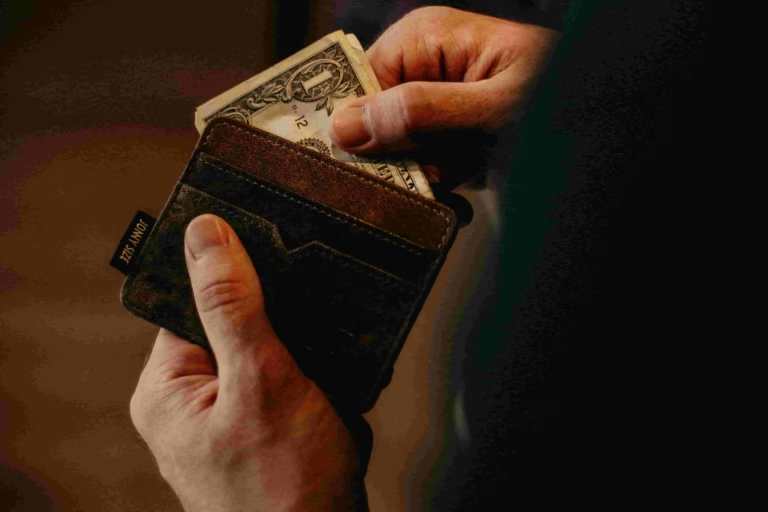How to Switch Your Bank Without Penalties in 2025
Thinking about leaving your current bank? You’re not alone. In 2025, more Americans are switching banks than ever whether it’s for better interest rates, no-fee accounts, or smoother digital tools.
But here’s the truth: switching banks isn’t just a click-and-go process. If you’re not careful, you could rack up fees, miss important payments, or even overdraft your old account. The good news? With the right approach, you can move your money without penalties or stress and even upgrade your financial life in the process.
Let’s walk through exactly how to do it.
Why People Switch Banks in 2025
It’s not just about chasing better rates. According to a 2024 Bankrate survey, 39% of U.S. adults considered changing their primary bank due to poor service, high fees, or outdated technology.
Common reasons to switch:
-
- Higher interest rates from online banks or credit unions
-
- Annoying fees (monthly, overdraft, low balance)
-
- Clunky mobile apps or long customer service wait times
-
- More flexible savings features (like goal buckets or early paycheck access)
Switching banks can be a smart financial move but only if you do it carefully.
Step-by-Step: How to Switch Banks Without Penalties
1. Pick Your New Bank Before Closing the Old One
Don’t shut anything down yet. First, research and open your new account. Look for:
-
- No monthly maintenance fees
-
- Competitive APY (especially for high-yield savings)
-
- FDIC or NCUA insurance
-
- Easy online access and mobile tools
Pro tip: If you’re switching for higher interest rates, check out our comparison of 2025’s best high-yield savings accounts.
Once the new account is open, keep both accounts active for at least a few weeks.
2. List Every Link to Your Old Bank Account
Before you start moving money, make a full list of anything tied to your old bank. This includes:
-
- Direct deposits (e.g., your paycheck, Social Security)
-
- Automatic bill payments (utilities, rent, subscriptions)
-
- Linked apps (Venmo, PayPal, Apple Cash, etc.)
-
- Credit card payments or loan drafts
-
- Recurring transfers to savings or investment accounts
It’s easy to miss something especially small monthly subscriptions like Spotify or Netflix. Check the last two months of transactions to be sure.
3. Move Your Direct Deposit First
Your paycheck is the lifeline of your finances. Prioritize updating your direct deposit with your employer. Most HR departments allow you to make the change online, but some may require a voided check or a direct deposit form from your new bank.
💡 Tip: It can take one to two pay cycles for the update to process, so don’t close your old account just yet.
4. Transfer Your Balance Strategically
Once your direct deposit is flowing into the new account, transfer your remaining balance from the old one. But leave a buffer typically $100 to $200 to cover any lingering auto-payments or surprises.
Avoid transferring the entire balance immediately unless you’re 100% sure no payments are pending.
5. Update All Auto-Pays and Linked Accounts
This is where most people slip up. If your Netflix or gym membership tries to pull from a closed account, you could get hit with:
-
- Overdraft fees (average $26–$35 per incident)
-
- Late fees from the vendor
-
- A hit to your credit score if a loan or credit card payment bounces
Update your new account details with:
-
- Utility providers
-
- Insurance companies
-
- Subscriptions (Spotify, Hulu, Amazon, etc.)
-
- Payment apps (Venmo, CashApp, etc.)
-
- Investment platforms (Robinhood, Acorns, etc.)
Double-check that all changes went through by monitoring your new account over the next month.
6. Wait for Final Payments, Then Close the Old Account
Give it at least 30 days before closing the old account. This allows time for:
-
- Final bills or refunds to clear
-
- Confirming all linked accounts are updated
-
- Your employer to finish switching your direct deposit
When you’re ready to close the account:
-
- Transfer any remaining balance to your new bank
-
- Request written confirmation of account closure (especially important if there’s a credit line tied to it)
-
- Destroy old checks and debit cards
💡 Important: Closing a checking or savings account won’t hurt your credit score directly. But closing a credit account (like a line of credit tied to the account) might. Always ask your bank if any credit products are connected before closing.
Bank Switch Checklist ✅
Use this as your go-to guide when making the switch:
-
- Open your new bank account
-
- List all direct deposits and auto-payments
-
- Update direct deposit with employer
-
- Transfer most of your balance (leave a small buffer)
-
- Update all linked apps, subscriptions, and services
-
- Monitor both accounts for 30 days
-
- Close old account (get written confirmation)
-
- Destroy old checks and debit/debit cards
Tips to Avoid Fees While Switching Banks
Even if you’re careful, a few missteps could cost you. Here’s how to avoid them:
-
- Don’t close your old account too early – give at least 30 days
-
- Keep a buffer balance in the old account to catch leftover charges
-
- Watch for low balance or inactivity fees—some banks charge these after 30 days with little or no activity
-
- Use free internal transfers rather than wire transfers (which can cost $20–$35)
-
- Avoid overlapping bills—make sure auto-pays are fully switched before the next billing cycle hits
Moving Banks Can Be a Money Upgrade
Switching banks may seem like a chore, but it’s often the first step toward better savings rates, lower fees, and a more modern banking experience.
And once you’ve done it once? It’s easier every time.
If you’re switching to build a better financial cushion, you’re already on the right path. Next up: setting the right emergency fund goal.
👉 Read: Setting Emergency Fund Goals — Why 3–6 Months Really Matters




